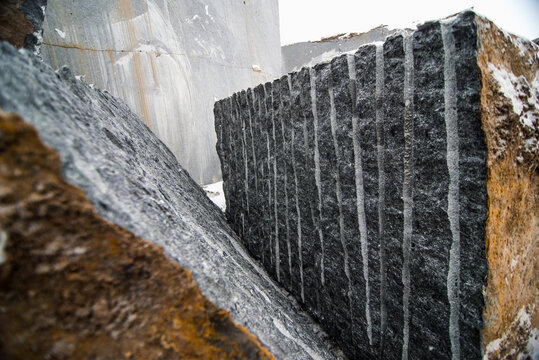Introducing the Mysteries of Granite Quarrying: Where Strength and Beauty Meet
The globe of granite quarrying is a world where the raw strength of nature converges with human creativity to develop structures that stand the examination of time with an air of style. From the midsts of quarries to the meticulous polishing in workshops, the process of changing granite right into building wonders is an intricate dancing of tradition and advancement. As we peer right into the midsts of this ancient craft, we begin to uncover the covert ins and outs that form the very essence of our built environment.
The Origins of Granite Quarrying
In the record of building background, the beginnings of granite quarrying are shrouded in a tapestry of old workmanship and geological marvels. Dating back to ancient Egypt and Mesopotamia, the removal of granite from quarries noted the start of a trip that would at some point bring about the production of a few of the globe's most famous structures.
Granite quarrying's roots can be traced to the competent artisans who recognized the stone's durability and aesthetic appeal. Via a mix of primitive tools and sheer determination, these very early quarry workers discovered granite blocks that would become the foundation of civilizations.
As civilizations advanced, so did the strategies of quarrying granite. The Romans, renowned for their engineering prowess, created innovative techniques for extracting granite to construct monuments, holy places, and roadways that stood the test of time.
The heritage of these old quarrying methods continues to form contemporary architecture, with granite remaining an icon of stamina and sophistication in construction jobs around the world. (granite quarries in south africa)
Devices of the Quarrying Trade
The advancement of granite quarrying methods from old people to contemporary times highlights the crucial duty played by the tools of the quarrying trade in forming the industry's techniques. In ancient times, quarrying devices were basic, often containing chisels, hammers, and wedges made from products like bronze or iron. These tools needed considerable workforce and time to essence granite obstructs from quarries.

Furthermore, the introduction of pneumatic tools and high-powered machinery has actually dramatically lowered the physical labor called for in quarrying operations, boosting employee safety and efficiency. As the quarrying industry continues to introduce, the devices of the trade remain at the forefront of driving progress and shaping the future of granite removal.
Drawing Out Blocks of Granite
Making use of precision equipment and advanced methods, the extraction of granite obstructs from quarries has come to be an advanced process in the contemporary quarrying industry. Regulated blasting methods are then used to damage apart the granite into convenient sections.

Polishing and Ending Up Techniques
To accomplish a remarkable surface on granite blocks, proficient craftsmens employ a series of thorough polishing and completing methods. After the first extraction and forming processes, the granite obstructs undertake a comprehensive sprucing up stage to boost their natural elegance and durability.
In enhancement to sprucing up, completing methods are applied to further refine the granite's look. By meticulously choosing and applying these polishing and ending up strategies, craftsmens can transform raw granite blocks right into charming items that showcase both strength and style.

Environmental Influence and Sustainability
With the growing focus on ecological consciousness in the market, granite quarrying techniques are progressively looked at for their impact on all-natural resources and long-lasting sustainability. Quarrying for granite can have substantial environmental ramifications. The removal procedure typically entails the use of heavy machinery, dynamites, and huge amounts of water, causing environment destruction, soil erosion, and water air pollution. Additionally, the transportation of granite from quarries to processing facilities produces carbon exhausts, further adding to environmental deterioration. granite quarries in south africa.
To alleviate these effects and make sure sustainability in granite quarrying, sector stakeholders are taking on numerous actions. Applying innovative modern technologies to lower power intake and water use, recovering quarried land for environmental repair, and promoting responsible sourcing practices are some techniques being used. In addition, qualifications such as the Woodland Stewardship Council (FSC) and the Management in Energy imp source and Environmental Design (LEED) aid customers determine ecologically friendly granite products.
Verdict
In final thought, granite quarrying is a process that needs specialized tools and strategies to extract blocks of granite and brighten them to a high level of coating. While the environmental influence of quarrying can be significant, initiatives are being made to enhance sustainability practices in the sector. In general, granite quarrying is a fragile balance in between utilizing the toughness and elegance Our site of this all-natural rock while reducing its influence on the environment.
Comments on “The Surprise Treasures: Discovering Granite Quarries in South Africa”